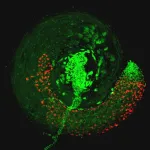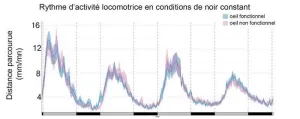(Press-News.org) The international liver oil and meat trade is driving rapid depletion of deepwater sharks and rays – an outcome that is potentially irreversible due to these animals’ extremely slow life histories. The findings highlight the need for immediate trade and fishing regulations . The deep ocean – the largest and one of the most complex ecosystems on Earth – is considered the last natural biodiversity refuge from the reach of human activities. It also remains one of the Earth’s least-studied environments. As such, there have been no comprehensive evaluations of the state of deepwater biodiversity. Despite international commitments to conserve 30% of the world’s oceans, no policy-relevant indicators exist to guide global conservation target setting or tracking. To address this need, Brittany Finucci and colleagues calculated global biodiversity change indicators of, status of, and threats to deepwater sharks and rays. Using the most comprehensive assessment of this group, encompassing all 521 species of deepwater sharks and rays, Finucci et al. estimated the species’ sensitivity compared to other exploited marine vertebrates, analyzed trends in their relative abundance, and evaluated their global extinction risk and the underlying patterns of use and trade. They found that deepwater sharks and rays are among the most sensitive marine vertebrates to overexploitation. According to the authors’ findings, one-third of threatened deepwater sharks are targeted for fishing and half of the species targeted for the international liver-oil trade are threatened with extinction. This activity is driving a steep population decline, which, given the species’ characteristic slow life histories, long life spans, and very low reproductive output, cannot be easily reversed. Moreover, many of these species are not protected by current management strategies. Finucci et al. demonstrate that a worldwide depth limit to fishing activity and an expansion of no-fishing areas could enhance protection for many of these species if implemented alongside international fishing and trade regulations.
For reporters interested in trends, a November 6 report in Science by Worm et al. found that sharks continue to be overexploited by fisheries despite widespread regulations aimed at reducing wasteful shark-finning activities.
END
Fishing for oil and meat drives deepwater shark and ray decline
2024-03-07
ELSE PRESS RELEASES FROM THIS DATE:
Atmospheric carbon dioxide drawdown from rock weathering processes has its limits
2024-03-07
Atmospheric carbon dioxide (CO2) drawdown from the chemical weathering of rocks peaks across a narrow range of moderate erosion rates, according to a new study. The findings provide new insights into the constraints of weathering-mediated CO2 drawdown and help to resolve conflicting data on the impact of uplift and erosion on the carbon cycle. The chemical weathering of rocks on Earth’s surface, in part, mediates the concentration of CO2 in the atmosphere and, thereby, the planet’s climate. Understanding the constraints of this process is critical to modeling Earth’s evolution over geologic time scales and ...
Introducing BioSUM: a bioresorbable ultrasonic sensor to detect post-surgical leaks
2024-03-07
A new device tested in pigs enables monitoring and early detection of pH changes in deep tissues due to post-operative leaks following gastrointestinal surgery. Such leaks – which occur at high rates 3-7 days following surgery – can be fatal if overlooked, and as such, require constant monitoring. Yet, early detection of these leaks remains a challenge. To address this need, Jaiqi Liu and colleagues developed a novel class of pH-responsive materials for real-time ultrasound measurement of pH changes indicative of leaks from healing ...
Rock weathering and climate: Low-relief mountain ranges are largest carbon sinks
2024-03-07
For many hundreds of millions of years, the average temperature at the surface of the Earth has varied by not much more than 20° Celsius, facilitating life on our planet. To maintain such stable temperatures, Earth must have a ‘thermostat’ that regulates the concentration of atmospheric carbon dioxide over geological timescales, influencing global temperatures. The erosion and weathering of rocks are important parts of this ‘thermostat.’ A team led by LMU geologist Aaron Bufe and Niels Hovius from the German Research Centre for Geosciences has now modeled the influence of these processes on carbon in the atmosphere. Their surprising result: CO2 capture through weathering ...
Often seen, never studied: First characterization of a key postsynaptic protein
2024-03-07
A protein that appears in postsynaptic protein agglomerations has been found to be crucial to their formation. The Kobe University discovery identifies a new key player for synaptic function and sheds first light on its hitherto uncharacterized cellular role and evolution.
What happens at the synapse, the connection between two neurons, is a key factor in brain function. The transmission of the signal from the presynaptic to the postsynaptic neuron is mediated by proteins and their imbalance can lead to neuropsychiatric ...
How does a virus hijack insect sperm to control disease vectors and pests?
2024-03-07
UNIVERSITY PARK, Pa. — A widespread bacteria called Wolbachia and a virus that it carries can cause sterility in male insects by hijacking their sperm, preventing them from fertilizing eggs of females that do not have the same combination of bacteria and virus. A new study led by microbiome researchers at Penn State has uncovered how this microbial combination manipulates sperm, which could lead to refined techniques to control populations of agricultural pests and insects that carry diseases like Zika and dengue to humans.
The study is published in the March 8 issue of the journal Science.
“Wolbachia is the most widespread bacteria in ...
How the brain coordinates speaking and breathing
2024-03-07
CAMBRIDGE, MA -- MIT researchers have discovered a brain circuit that drives vocalization and ensures that you talk only when you breathe out, and stop talking when you breathe in.
The newly discovered circuit controls two actions that are required for vocalization: narrowing of the larynx and exhaling air from the lungs. The researchers also found that this vocalization circuit is under the command of a brainstem region that regulates the breathing rhythm, which ensures that breathing remains dominant over speech.
“When you need to breathe in, you have to stop vocalization. We found that the neurons that control vocalization ...
Shape-shifting ultrasound stickers detect post-surgical complications
2024-03-07
EVANSTON, Ill. — Researchers led by Northwestern University and Washington University School of Medicine in St. Louis have developed a new, first-of-its-kind sticker that enables clinicians to monitor the health of patients’ organs and deep tissues with a simple ultrasound device.
When attached to an organ, the soft, tiny sticker changes in shape in response to the body’s changing pH levels, which can serve as an early warning sign for post-surgery complications such as anastomotic leaks. Clinicians then ...
The Malaria parasite generates genetic diversity using an evolutionary ‘copy-paste’ tactic
2024-03-07
By dissecting the genetic diversity of the most deadly human malaria parasite – Plasmodium falciparum – researchers at EMBL’s European Bioinformatics Institute (EMBL-EBI) have identified a mechanism of ‘copy-paste’ genetics that increases the genetic diversity of the parasite at accelerated time scales. This helps solve a long-standing mystery regarding why the parasite displays hotspots of genetic diversity in an otherwise unremarkable genetic landscape.
Malaria is most commonly transmitted through the bites of female Anopheles mosquitoes infected with P. falciparum. The latest world malaria report ...
Loss of nature costs more than previously estimated
2024-03-07
Researchers propose that governments apply a new method for calculating the benefits that arise from conserving biodiversity and nature for future generations.
The method can be used by governments in cost-benefit analyses for public infrastructure projects, in which the loss of animal and plant species and ‘ecosystem services’ – such as filtering air or water, pollinating crops or the recreational value of a space – are converted into a current monetary value.
This process is designed to make biodiversity loss and the benefits of nature conservation more visible in political decision-making.
However, the international research team ...
Lack of functional eyes does not affect biological clock in zebrafish
2024-03-07
Functional eyes are not required for a working circadian clock in zebrafish, as a research team1 including CNRS scientists has now shown.
Though it is understood that the eye plays a key role in mammalian adaptation to day-night cycles, the circadian clock is most often studied in nocturnal vertebrates such as mice. The zebrafish, in contrast, is a diurnal vertebrate. Through observation of various zebrafish larvae lacking functional eyes,2 the team of scientists has demonstrated that the latter are not needed to establish circadian rhythms that remain synchronized with light-dark ...




